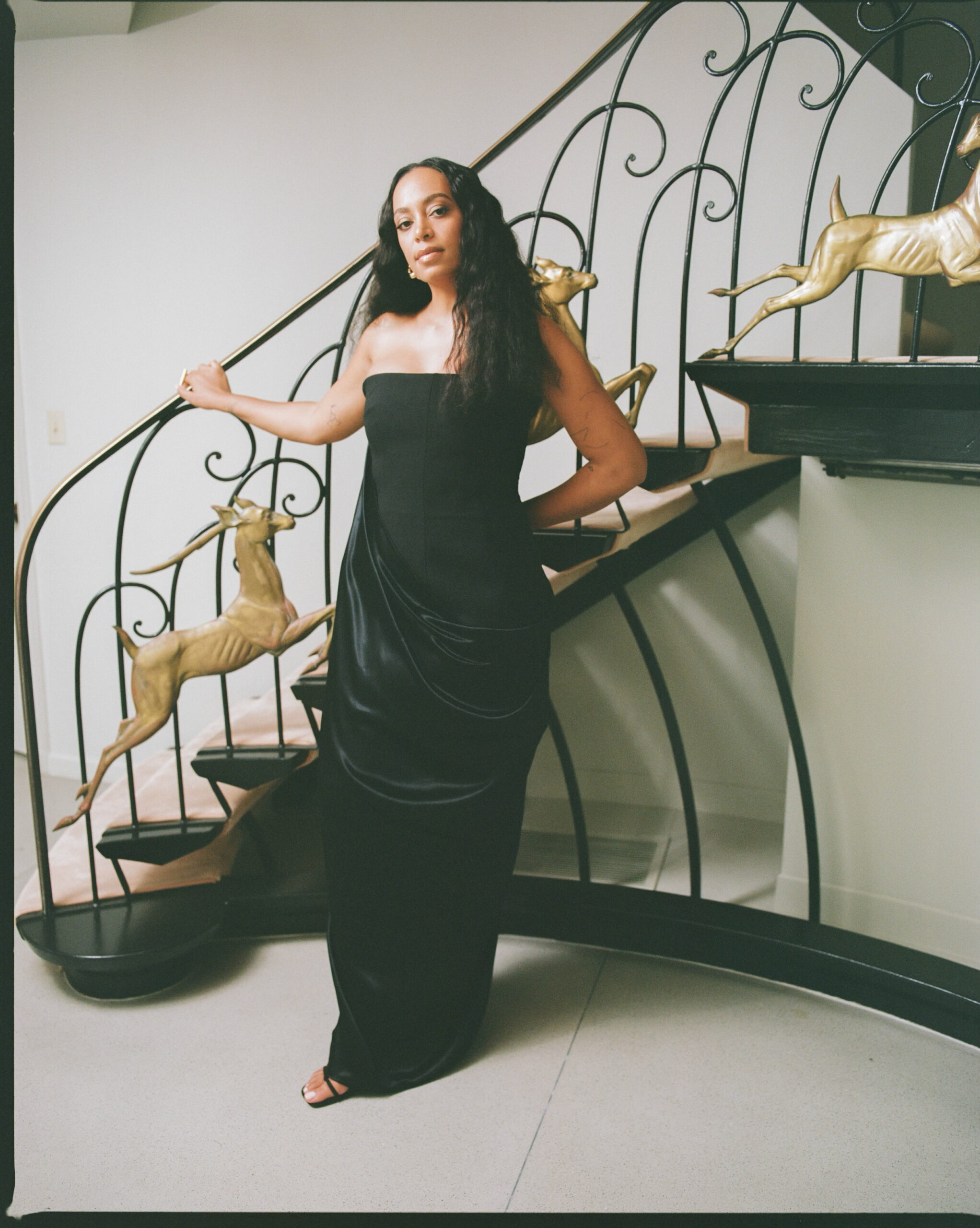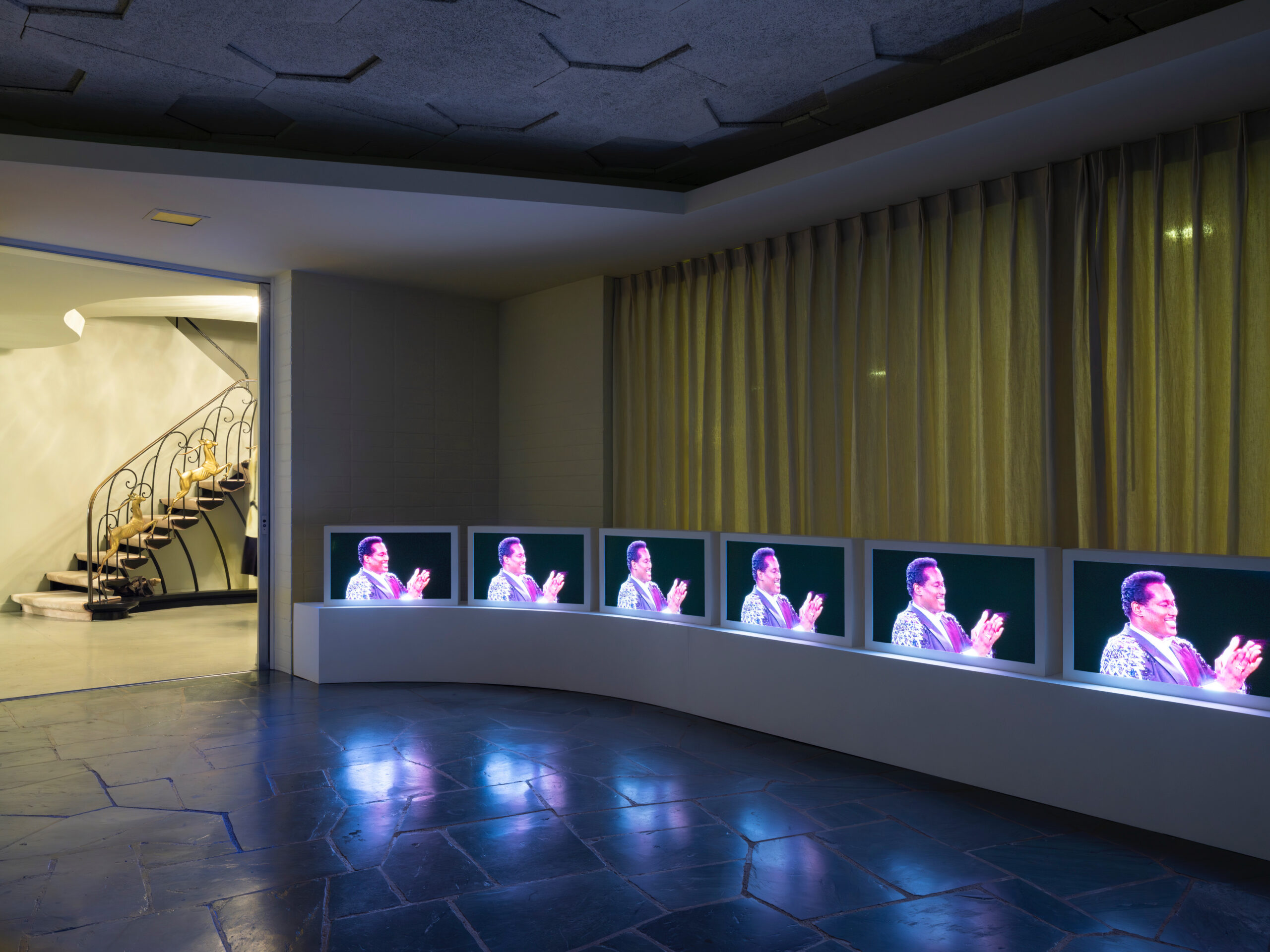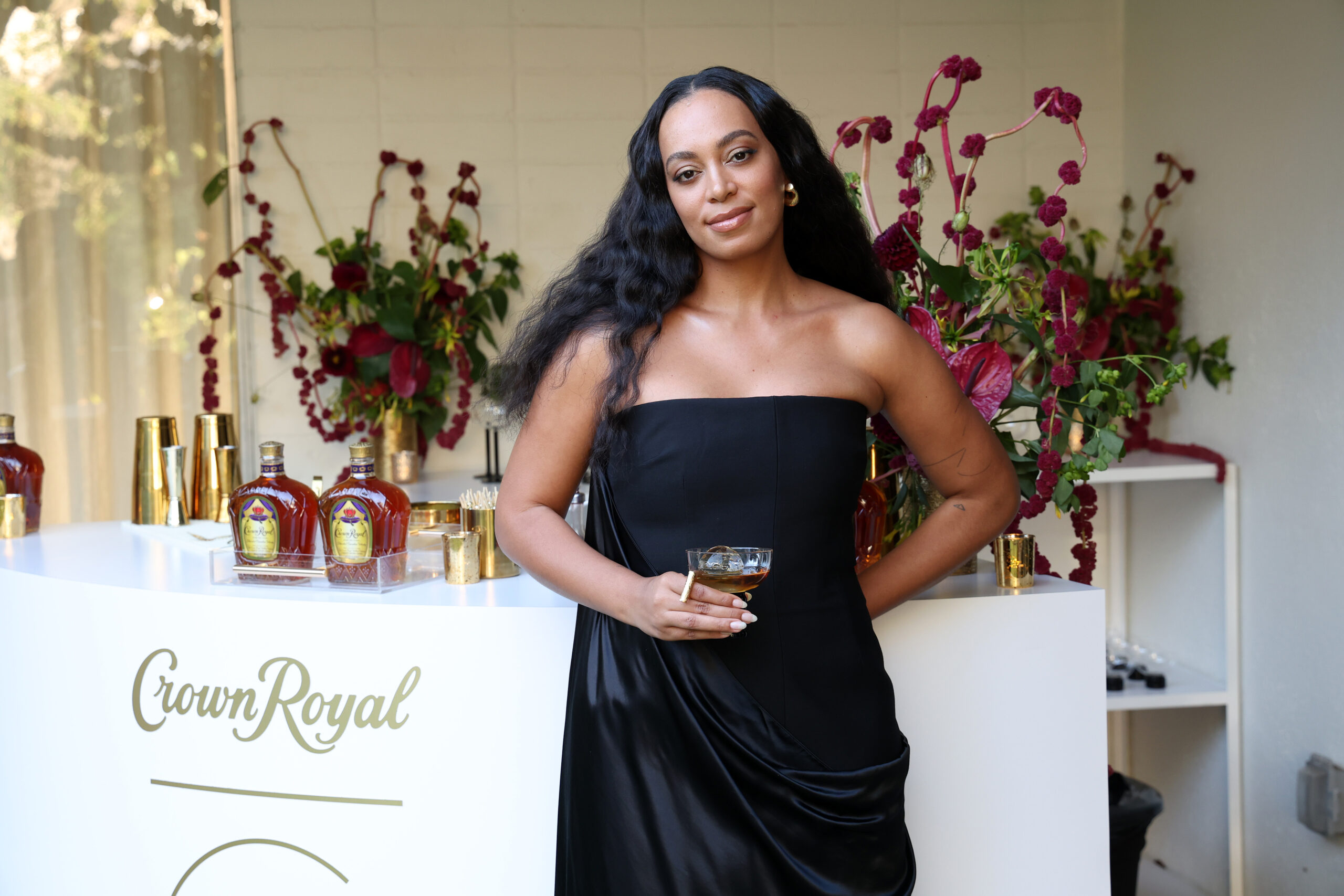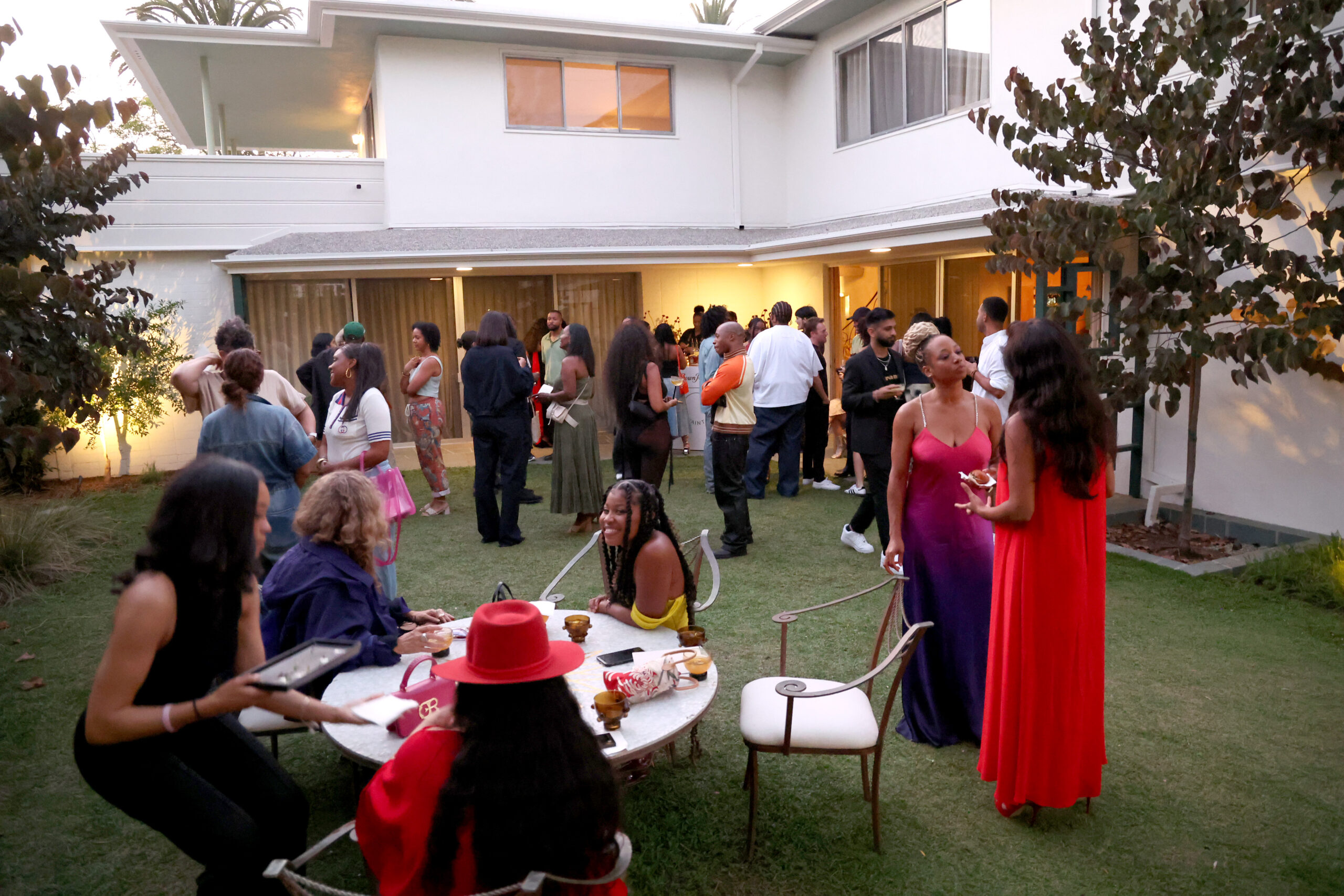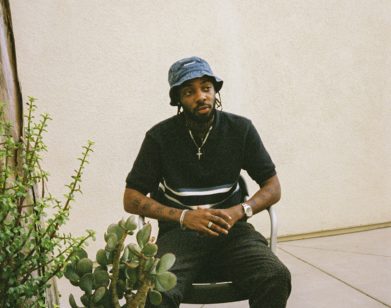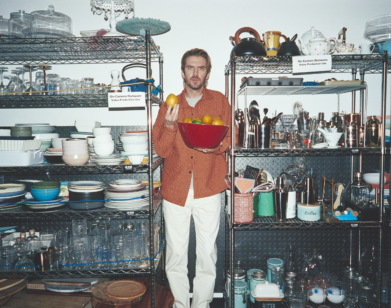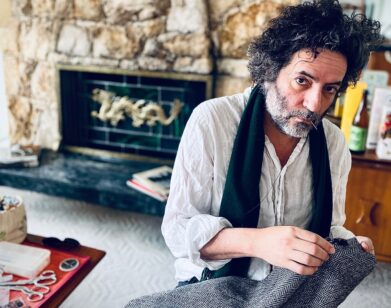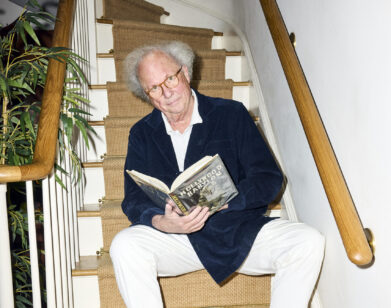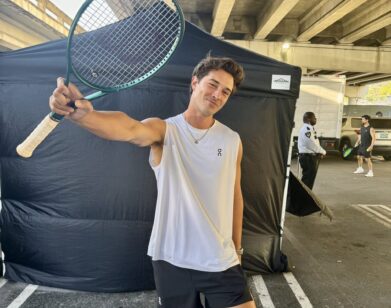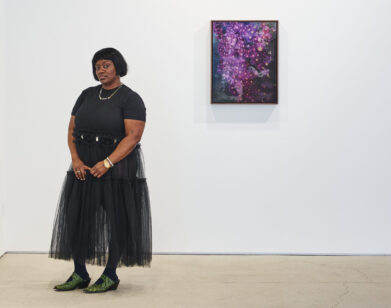PARTY
“That’s the Texas in Me”: Solange on Houston, Cowboy Lore, and Going Barefoot
On a sweltering evening in Mid-City L.A. earlier this month, Solange entered the home of the renowned Black architect Paul R. Williams with her typically tranquil confidence, attending to every last detail of the launch event for Saint Heron Glassware’s collaboration with Crown Royal. “This is just a great day for Black design,” says the Grammy Award-winner, who released the first batch of designs from her glassware brand, made with the Philly-based glassblower Jason McDonald, earlier this summer. Her mother, Tina, was in attendance, along with the acclaimed jazz pianist Patrice Rushen—”an icon of mine,” added Solange, dressed in Ferragamo and styled by Solange Franklin. Before a special screening of Luther Vandross’s 1989 performance of “A House is Not a Home” at Wembley Stadium, she and I talked about meeting your idols, walking barefoot everywhere, and the power of Black thought.
———
ARY RUSSELL: How are you feeling?
SOLANGE: I’m feeling incredible. It’s such an honor to share space with this incredible architect who is a part of history, who I’ve read about and studied and been so in awe of. And then to actually be here in his home that he shared with his wife is such an honor. It’s work that I feel called to be doing, celebrating these incredible designers, architects, and creatives who changed the way that we see the world. And I feel like everyone needs to know who Paul R. Williams is. This is just a great day for Black design.
RUSSELL: Do you make a point to seek out and collaborate with other Black creatives?
SOLANGE: I try to. In the case of this house, I have been looking for Paul Williams architecture to host this event and it came down to literally knocking on the door and asking the owner, “How can we do this?”
RUSSELL: When you’re conceiving of events with Saint Heron, are you making mood boards? What’s the creative process like?
SOLANGE: For me, all of this is an extension of the world-building that I’m creating. Whether it be a shape in the glassware echoing the design of the rodeo arena I had in mind with the When I Get Home film, there are repeated explorations and themes through the work. So it’s an honor to be able to bring that to life through a physical object now.
RUSSELL: It’s cool that you’ve put as much thought into the glassware and this event as you do into your music, which is itself very much about world-building.
SOLANGE: I appreciate that. It’s really a means of survival for me. Since I was a little girl, I had all of these ideas and ways that I wanted to see the world in which I existed. All of this is an expression of what that could be. I was able to use architecture, music, sound, all of these things as grounding tools for this nomadic life that I lived as a teenager. And these were the things that made me feel like, “Okay, life is going to be okay.” These are stabilizing forces in my life. So I just feel so blessed and honored to be able to call this work my job now, and also my self-preservation, and the preservation of our collective stories, our collective history, our collective blueprints. Now I’m really focusing on having an archive that supports that.
RUSSELL: How do you balance that, preservation and presentation? Sharing all these amazing things that are also very personal.
SOLANGE: It’s about balancing that spirit of time. Everything that’s documented doesn’t have to be shared. Everything that is built doesn’t have to be platformed. And there are some moments that are meant to be expressed in real time. It’s about finding safe ways to keep the expression going, to keep the conversation going. [Glassware] is a tangible object, I get to imagine the intimacy of holding it, the intimacy of bringing it.
RUSSELL: The glassware made me want to take an Africana studies course.
SOLANGE: Okay, I’m doing my job well. We want to create a visceral experience. We don’t really call this commerce, we call these art objects. The hand blown collection took two years from thought to actual tangible object. And this was created with someone’s hands in his glass studio in Philadelphia. There’s a story there, him existing and creating these objects. There’s a spirit in them. When you leave a room, what does a chair say about its owner? It’s thinking about how these objects can take up space in that way, in someone’s materialized life.
RUSSELL: Even the name of the cocktail made me think of Luther Vandross.
SOLANGE: Yes, and we’re screening his performance of “A House Is Not a Home” tonight. I love that you connected that. That song is in the subconscious Black brains of our parents cleaning the home or getting our hair done in the salon. And shout out to Dionne Warwick because that was her song.
RUSSELL: Someone was telling me that this is a very Black neighborhood, and I just moved to L.A. today. What do you suggest someone do to seek out Black community here?
SOLANGE: I think hiking is the best part of L.A. Having proximity to nature feels really good. I also think neighborhoods like Leimert Park, there’s such a rich Black history there. It’s beautiful to see places like Art + Practice, an art space that Mark Bradford owns, continuing the legacy of having our own institutions and keeping them grounded in communities. Places like the Underground Museum, those places are all inspirational to me and a part of how I see Saint Heron existing.
RUSSELL: You’re from Houston. What’s the most Texas thing about you?
SOLANGE: I walk with my shoes off pretty much everywhere.
RUSSELL: Everywhere?
SOLANGE: Yes. That’s the Texas in me. And I think everything sounds better slowed down.
RUSSELL: L.A. or Houston? I feel like I know the answer.
SOLANGE: I’m not choosing. All of these places have made me who I am. I feel like a global nomad. They’re all a part of me in some way.
RUSSELL: Obviously, we’re in the home of Paul. Williams, the very influential Black architect. Who’s a Black icon you’re inviting over to chat over a bottle of Crown Royal?
SOLANGE: I think she’s coming tonight, but Patrice Rushen is an icon of mine. Everything from her sonics to her career as a composer and as an instrumentalist, but also the iconography she created with her hair, with her look. She’s legendary.
RUSSELL: Have you met her before?
SOLANGE: Oh no, I just invited her. This will be my first time meeting her.
RUSSELL: Are you nervous?
SOLANGE: I’m so nervous. I’m super excited as well.
ARY RUSSELL: So Crown Royal donated $100,000 to the Black rodeo. It must be nice to work with a brand that doesn’t just center a Black woman but actually puts their money where their mouth is.
SOLANGE: Listen, that was one of the things that I aligned with. I’ve really been a student of the Black cowboy and the history of the Black cowboy. As we know, Black people have been erased from cowboy culture, but the first moving image ever was a Black cowboy. So I just feel so empowered by the work that they do with Black cowboys and bull riders. That’s an art form that I will forever be in awe of, and one that I explored in previous work of mine. And with Saitn Heron, being able to build a space where Black creativity is the center is a childhood dream of mine. I work with an incredible team of women who inspire me and make me feel safe every day.

